The Breakdown
Pros
Cons
Sena provided this helmet at no-cost for the purposes of this review. Thank you, Sena!
Introduction
In heading towards the fall season and with (hopefully) the worst of the heat and humidity behind us, but in coping with our COVID-19 environment, our motorcycling activities are ramping back up (not that they stopped) to take advantage of the cooler and perhaps drier weather; but in not forgetting the rules and maintaining the necessary protocols.
Prolonged distance travel, especially ADV oriented, still seems to be a ways-off. There is always hope and in the meantime, sticking close to home lots of ‘rediscovering’ of local roads, secondaries, and trails is ongoing.
Combining this rediscovery along with new product testing just seems right, not that one needs an excuse to get out and turn the moto-wheels. Among many new products in the queue is the subject of this wBW review – the Sena Outrush Modular Smart Helmet.
I am a big fan of good modular helmets and not just because I wear eyeglasses full time; they provide or can provide fit, feel, comfort, and functional benefits vis-à-vis full-face or three-quarter helmets.
Smart Helmets from Sena
Sena continues to expand their ‘Smart Helmet’ line with the release of the modular Outrush and its integrated BT v3.0 system that doesn’t seem to be based on a previous Sena architecture.
The BT capabilities found with the Outrush aren’t the usual firmware-based full-meal deal, but still provide a satisfying menu of value Sena essentials including pairing for three other systems, two-party HD intercom, music streaming, and phone use options.
The updated Sena Smart Helmet lineup is:
- Outrush – modular, integrated BT system, 2-user intercom
- Momentum EVO – full-face, integrated BT/Mesh system
- Momentum INC PRO – full-face, INC, integrated BT and QHD Camera systems
- Momentum PRO – full-face, integrated BT and QHD Camera systems
- Outstar – open face jet-style, face shield & sun visor, integrated BT system, 2-user intercom
- Savage – open face ¾ style, integrated BT system, upper-rim microphone, 4-user intercom
- Econo – open face jet-style, face shield & sun visor, integrated BT system, 4-user intercom
- Cavalry – half helmet, integrated BT system, upper-rim microphone, 4-user intercom
- Cavalry Lite – half-helmet, integrated BT system, upper-rim microphone, 2-user intercom
INC – Intelligence Noise Control
The Sena Outrush Smart Helmet
After removing the Sena helmet box from inside the larger shipping box and putting it aside, opening the Sena box revealed a top cardboard keeper that works to position, protect, and minimize movement of the helmet inside the box; little things count.
With this recyclable positioning ring lifted away, the Outrush Helmet, Gloss White, Large, in its Sena Logo storage/carry bag/pouch is lifted out, revealing a micro-USB to USB-A power/data cable and a small plastic bag with two boom microphone sponges (socks) sitting in the box.
A small poly-plastic bag holds the pocket-sized User’s Guide with English, French, German, Italian, and Spanish language sections and separate certification and handling pamphlets.
Shopping Now? We Recommend:
webBikeWorld works closely with Revzilla and Amazon to provide our testers with quality products to review. While we have an affiliate relationship and receive a commission from items purchased, this addition comes at no additional cost to you. It is the primary way we pay for our site and reviewers.
Features & Specs (Compilation)
(Sena listings)
- Single shell polycarbonate ABS outer and multi-density EPS inner liner
- Clear face shield, scratch-resistant, UV-resistant, fog-resistant, and Quick Release system
- Retractable and removable sun visor
- Removable washable headliner and neckroll component
- Removable nose guard and lower chin spoiler (skirt)
- Ventilation system – top and chin vents and rear exhaust port
- Breathable mesh allows airflow through the helmet
- Steel Quick Release Buckle with Reinforced Chin Strap
- Reflective Safety Patch
- Integrated Bluetooth 3.0 Headset with single Jog Wheel Control
- Supports Headset, Hands-Free, Advanced Audio Distribution and Audio/Video Remote Control (HSP, HFP, A2DP, and AVRCP) profiles
- HD Intercom (two-users at a time) for rider/passenger, rider/rider use
- Built-in HD speakers and boom microphone
- BT Intercom Range up to 800m or 0.5mi
- Noise Cancellation: Advanced Noise Control
- Built-in SBC Codec
- Versatile Jog Dial
- FM Radio
- Voice Prompts
- Firmware Upgradeable (using Sena Device Manager software)
- Lithium Polymer Battery provides up to 15 hours of talk time, charging time is 3hours
- Helmet sizing: Small, Medium, Large and X-Large, in Matte Black or Glossy White
- Helmet weight: listed as 1730g (61oz)
- Helmet is DOT approved
- Electronics Certifications: CE, FCC, and IC
Build Quality & Finish
The outer shell is formed of light-weight polycarbonate ABS, with a full multi-density EPS inner layer. Interior fittings are the removable side cheek pads, a one-piece combination head-liner, neck-roll, nose guard, and lower chin guard spoiler or skirt.
A smooth blemish-free Gloss White sealed finish makes a good first impression, as do the nicely styled and securely fitted front chin and top vents and small rear spoilers fitted over the rear exhaust ports. All the Outrush and Sena logos are precisely positioned, as is the DOT sticker; another “all good” scoring.
The interior designer did a good job here – clean shaping, well cut, well fitted, and comfortable, but not plush. The cheek pads and large one-piece headliner and neck roll components are nicely shaped and well made. Both the upper nose guard and lower chin spoiler or skirt pieces are easily removed and reinstalled.
A ratchet-style steel buckle mechanism is used on the Retention Strap, vice the double D-ring fastener approach. Push the right side ratchet slider into the Red buckle to engage – done. Pull the Red nylon strap to release the buckle – simple and very secure; no fumbling with the excess strap fastener or D-rings. A glove-friendly solution indeed.
The right side ratchet slider strap section is adjustable using the loop and slide adjustment pieces. It is (extremely) important that the whole retention strap assembly fit properly for helmet security and personal safety.
Summary – Very Good. All the basics are provided; no frills, but everything fits well, looks great, and other than the loose front lower vent assembly and poorly fitted chin guard inner backing plate, everything fits and function without issue. The Outrush is a simple well built and well-finished helmet that is proving very durable with constant use.
Paint & Colourways
Available in two finishes – Gloss White and Matte Black, the basics it seems, but popular options overall. The helmet is available in Small, Medium, Large, and Extra Large. Sena provided the Gloss White variant, in Large, for this review.
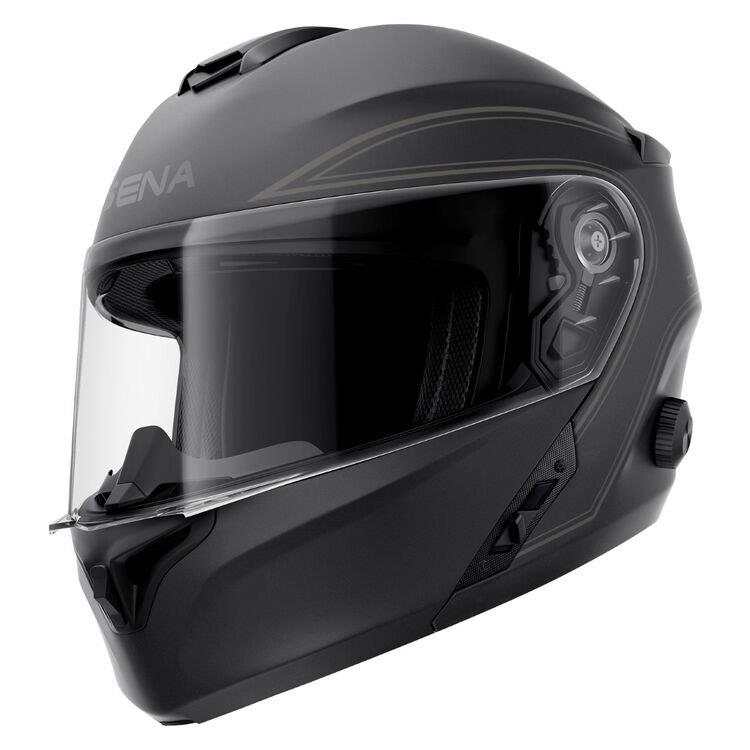 |
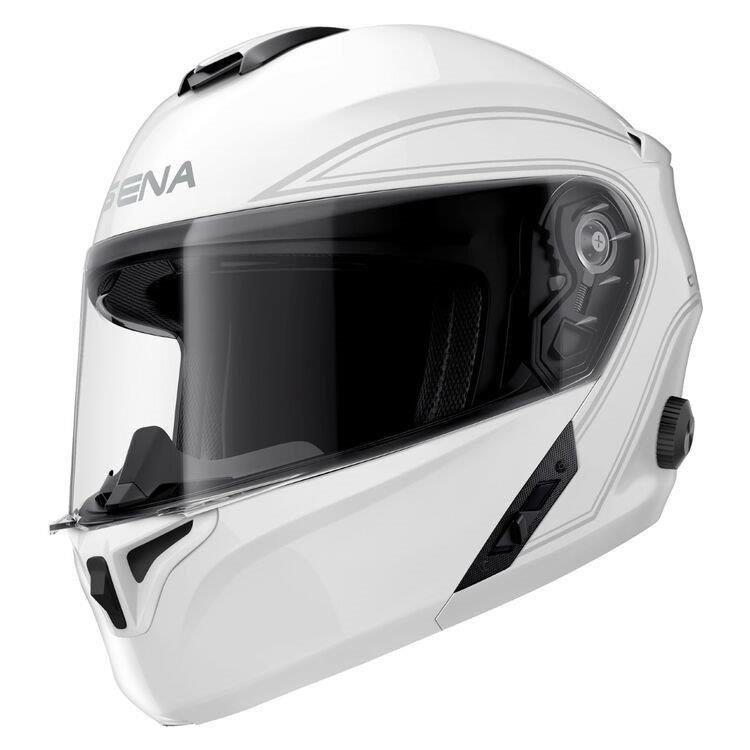 |
|---|
Both the Gloss White and Matte Black helmets have muted silver-toned (slightly) reflective trim along the top side and lower mid to back areas; minimalist but complementing the shape and lines of the shell, as do the relatively small and discrete Sena and Outrush markings.
Summary – Excellent, as it really should be for a single finish and sealed helmet shell; attention to detail pays off.
Styling, Fit & Comfort
As noted earlier, overall helmet shaping is smooth and sleek, and the Gloss White sealed finish is a big contributor to the helmet’s overall look and feel. Everything is well fitted, nicely styled and it all works to create a flowing aerodynamic contoured look from the front, sides, and back.
The inserts pieces – chin and top intakes and discrete rear exhaust spoiler covers are subtly styled for a minimalist look, they all fit or overlay with no loose or unfinished edges and, they all contribute to the overall smooth look and flow of the helmet.
For the North American market, the Outrush helmet uses an intermediate-oval shaping that should be good for many riders, including my head that is seemingly between an intermediate and long oval shaping. As such, the Outrush provides a bit more space and relaxed fitment overall with minimal break-in required to gain optimum comfort.
This compares to the long-oval shaping of the Sena Momentum EVO helmet that is an excellent helmet, but one that appears to be and is narrower overall – even with continued use it still has some tight but tolerable pressure points.
Available in four sizes, the Outrush is fitted per the sizing chart drawn up below. The large in 59 to 60cm and between sizing and shape, it is a bang-on fit for my noggin.
| Size | Head (centimetres) | Head (inches) | Hat Size (inches) |
| Small | 55 to 56cm | 21 & 5/8ths to 22 | 6 & 7/8ths to 7 |
| Medium | 57 to 58cm | 22.5 to 22 & 7/8ths | 6 & 7/8ths to 7 |
| Large | 59 to 60 cm | 23.25 to 23 & 5/8ths | 7 & 3/8ths to 7 & ½ |
| XL | 61 to 62cm | 24 to 24 & 3/8ths | 7 & 5/8ths to 7 & 3/4 |
Eyeglasses – this is usually the second or third point assessed once the helmet is on the head. Modular helmets vary greatly in how well or how badly they don’t accommodate eyeglass temple pieces; many manufacturers seem to feel that with the modular helmet opened for donning or doffing that eyeglasses don’t need to be removed…not true in all circumstances.
And the other observation relevant to this and overall fitment is that as the front piece is closed and locked in place the side front areas squeeze inwards – all intended to form the protective shell, but also, in many cases, diminishing frontal side clearances that can impact eyeglass use.
So my feeling is that some side spacing or specific channeling for eyeglass temples is needed; and in this regard, the Outrush fares well – either by design or happenstance, and for the most part, eyeglasses slide in without much issue, whether the front piece is open or closed; my other three modular, all very expensive pieces, don’t have a hope in this regard.
Summary – Excellent. Great outer shaping and aerodynamics. A comfortable intermediate oval shell for day-one day-long use. EPS interior well channeled for excellent interior airflow. The EPS liner does shift a bit when the chin guard section is closed. Easily removed/replaced interior pieces are conforming, comfortable and, stay in place with on/off use. Eyeglass temples are facilitated whether the front piece is open or closed…this I like.
Weight & Balance
Lifting the Outrush (in its protective bag) out of the box does reveal a bit of heft, although not to the same degree as experienced with some other modular helmets.
The listed weight for the Outrush is 1730g or 61oz. The Pelouze scales here revealed a dry weight of 1780g or 62.8oz or 3.92lbs, so a bit more than the listed weight. A second (newer) Pelouze set of scales registered a slightly lighter 1778gr.
Without digging into the wBW Helmet Database the Sena Outrush sits pretty much in the middle regarding weight for popular modular helmets with or without a BT system. By way of example, it is about 10gr more than the Touratech Adventuro Traveller Carbon Helmet that has a larger shell and carries far more components; but I suspect the Outrush is better balanced…
The Outrush is indeed well-balanced front to rear with no apparent bias. The lightweight integrated modular BT components sit along the inside mid-points and do not (should not) contribute any noticeable weight bias, not even from the single small plastic Jog Wheel on the outer left side.
Only when the front chin guard is fully lifted and locked into place is some upper weight and frontal force felt – all expected, especially if moving, even at slow speeds.
Summary – Very Good. The Sena Outrush carries its weight extremely well and in also being well balanced it never becomes an “albatross around the neck”, or at least it hasn’t so far.
Interior Sections
Along with the EPS layer, there are five interior components – two side cheek pads, one-piece head-pad, neck-roll assembly, nose guard, and lower chin guard spoiler – all removable for cleaning, repair, or replacement.
As noted earlier, interior design is good, comfortable to use, but lacking some of the luxury features found in some mid to upper-tier helmets. Although to be brutally honest, I find the Outrush to be as or almost as comfortable as helmets far above its price point…
Cheek pads are secured with three plastic pulls (be firm, but gentle) that seem durable enough so far. The one-piece head and neck roll combination is form-fitted in place and secured with the usual plastic edging that slips into place between the outer shell and EPS liner – just make sure the bottom edge of the neck roll is sitting fully inside the shell.
The semi-rigid nose guard piece is well-formed and sits precisely in place, secured with left, centre, and right insert tabs to the inner wall of the eye port trim section. The only observation here is that the flare or raised nose-guard shaping sits high, providing good coverage, but it seems to be a bit tall shall we say.
On the lower front edge of the chin guard is found the front spoiler or skirt, formed of stretch material and plastic edging with short tabs; this piece works very well in streamlining and reducing lower air intake, with less noise along or inside the lower part of the helmet – all good.
However, the piece is easily dislodged when handling the helmet, largely due to its short engagement tabs and (blame here) the user – it takes some handling adjustments to avoid pulling it out repeatedly. On the up-side though, it is easily put back in place.
The function of the ratchet slider and buckle retention strap is slick and while the discussion between this option and the double D-ring approach will continue, I prefer this solution. It is simple, adjustable and it works.
The only downside I see is that if one tends to forget to do their helmet up, it might not be as noticeable in the absence of the usual overly long D-ring strap flapping around …
Set for the necessary length to provide a snug but comfortable fit and with the padded strap covers set properly, the retention assembly is comfortable and secure.
Summary – Excellent. This rating is based on the sum of the interior parts found on the Sena Outrush. Further validation is provided in comparing the interior of the Outrush to the interiors of other higher priced helmets…
Chinbar, Eye Port, Face Shield & Sun Visor
Chinbar – the pivoting chin guard works very well although tolerances aren’t as tight as other heavier weight modular helmet and even when closed, there is a bit of flex noted between the main shell and the chin guard – an observation that can be made with other polycarbonate shell helmets.
With slightly tighter tolerances between fitment of the main shell and the chin guard sections and use of a heavier duty cushion/seal lining between the main shell and the chin guard pieces, most of the flex and loose feel would be addressed; and the noise generated by the pieces when the helmet is used resolved, or minimized.
Another common sore point with modular helmets is the chin guard release; but not on the Outrush. It is easy to use and positive in its action – it never fails to release or engage the chin guard securely.
The Outrush has a unique and seemingly debatable feature in that the chin guard can be locked open when it is fully raised. With the piece raised, a small slider is revealed on the right side and pushing it up locks the chin guard up – something that can prove useful when dismounted or riding at very slow speeds as it prevents the chin guard from dropping unexpectedly.
Eye Port – the eye port is 21.3cm (8.38in) wide and 10.3cm (4.05in) deep and cleanly finished with a silicone edge insert rather than a thicker multi-layer edge sealing approach found on many other helmets.
The width of the eye port is a bit narrower than some other eye ports on other modular helmets, but it still provides very good front and peripheral viewing and the helmet never seems to close in or feel restrictive regarding visual awareness.
While the edge or trim piece around the eye port looks and is minimal, it is quite effective and works very well with the shape and features of the face shield, with good noise control and only a slight bit of moisture ingress experienced during wet weather riding, something easily addressed with a bit heavier duty seal piece.
Face Shield – the clear face shield is scratch, UV, and fog-resistant and E9 marked. Outside of some (expected) distortion along shaping and surface edges the shield is distortion-free. The top inward edging and bottom angle work very well, providing great performance regarding protection for the eyes, reduction in noise and moisture ingress.
The face shield has five settings:
- P1 – fully closed – snapped in place
- P2 – unlocked, 2-3mm opening for defogging & cooling
- P3 – about 30% open
- P4 – about 70% open, and
- P5 – fully open
Face Shield Mechanism – the quick-release assembly works although quite stiff and even with the shield fully up and the spring-loaded release levers pulled down it takes a bit of wiggling to get the face shield to release; some ‘exercising’ of the parts and silicone on the mating surfaces should help. Sections 1.4.3 & 1.4.4 of the User’s Guide provide good visuals.
Sun Visor – the dark tint visor is effective at reducing glare without reducing visibility. The angled left-side slide control works smoothly with a solid ‘clunk’ heard when the visor is raised.
Another appreciated touch – the sun visor locks up or down positively with an extra push on the slider. This extra push also fully drops the visor down another 5-8mm, something that I appreciated as I found its standard drop or coverage to be just a little bit short for my face and positioning in the helmet.
Removing or installing the sun visor is simple – lower the sun visor fully, pull one side of the visor outwards to release the tab and once it has separated from the helmet, do the same on the other side. Reverse this process to install the sun visor.
Note – there is no provision to add a Pinlock nor is a PinLock compatible face shield listed yet, unfortunately. Nor is a darker tint shield listed. A query regarding these pieces is with the Sena rep.
Summary – Very Good. The Outrush provides all the basics and while not feeling as solid as larger heavier modular, from design, safety, and price point perspectives it all works including the chin guard, face shield, and sun visor components. The flex between the outer shell and chin guard is more the nature of the plastics, but when closed it is solid, although the helmet squeaks (see plastics comment) – this can be largely mitigated with some silicone lubricant on join surfaces.
Shopping Now? We Recommend:
webBikeWorld works closely with Revzilla and Amazon to provide our testers with quality products to review. While we have an affiliate relationship and receive a commission from items purchased, this addition comes at no additional cost to you. It is the primary way we pay for our site and reviewers.
Aerodynamics & Ventilation
The Outrush helmet at first appearance looks like it could do very well regarding airflow and overall noise management; in fact, it does an excellent job.
Overall shape and contouring are effective in providing smooth airflow to and around the helmet, minimizing buffeting and reducing noise levels whether from front or side forces and it seems to be particularly effective in cockpits that have minimal frontal protection.
Ventilation Intake
Front chin intake – the lower front chin intake is simple – two angled side intakes and a small Up/Down slider in the middle guiding a plastic cover piece on the inside. But the slider separated from the inner piece after first use and while it got refitted (with difficulty), it doesn’t like to stay in place; this is a design through to QC issue that needs addressing.
Some scoping and a bit of light-touch reassembly had the slider back in to the cut-out on the inner piece that moves up/down when the slider is used (or supposed to), but the slider does not like to stay mated to the inner piece – poor design and assembly it seems.
And to keep the slider from being lost, a small backing square of 3M VHB holds it in place on the plastic surface of the vent piece. As such the assembly looks normal but it’s not very functional. Even with the slider functioning, open and closed settings are virtually the same – it’s not a sturdy or effective implementation.
The issues with the front slider/inner piece, subsequent repair, and performance observations all got written up and sent to the Sena rep, who in turn passed them back to the source so to speak; hopefully, this Outrush just slipped by QC.
Top intake – a relatively wide (5.3cm or 2.0 in) top intake (forward = closed and back = open) provides excellent ventilation from the upper crown, sides, and back; one look at the interior channeling and air stacks in the EPS liner reveals the reason for this great flow.
Ventilation Exhaust
Rear exhaust – small left and right rear exhaust ports are pretty much hidden under the styled spoiler inserts – not a bad approach and functionally, this minimalist approach works very well in the pull-in, push-out airflow, and temperature management strategy.
Summary – Very Good Overall. An Excellent rating is missed due to the quirky front chin intake. Placement and effectiveness of the top intake is excellent, with extremely effective interior channeling of incoming and subsequent exiting of air through small exhaust vents. With the upper intake closed, a bit of airflow can be felt through the loose chin intake but it’s not too cold nor obtrusive, yet. Overall noise levels are very good other than the creaking of the plastic pieces.
The Outrush BT System
The integrated BT system in the Outrush isn’t identified as being based on a specific Sena system architecture (something usually identified with other Sena helmets with BT), but it is based on Bluetooth v3.0 and supports Headset (HSP), Hands-Free (HFP), Advanced Audio Distribution (A2DP), and Audio/Video Remote Control (AVRCP) profiles.
It can be paired to three other BT systems, although the HD intercom only supports two-user sessions. Performance-wise, intercom working distance, listed as up to 800m (0.5mi) in open terrain is a claim well-validated during use (see On the Road section below).
Jog Wheel – the only exterior sign of the BT system is the small Jog Wheel sitting by itself on the left exterior, easy to reach, and easy to use, with a bit of practice, especially as all the instructions are made as if the helmet is not on the head…
The BT Module itself sits mounted to the left side interior with a small pass-through for the Jog Wheel connection. The boom or shaft of the microphone is integrated into the housing of the left speaker. Both speakers sit in recesses in the EPS layer.
Charging cable – the charging/data cable is short, with a micro-USB port, and a small LED on its housing…I was wondering where in the heck the visual communication interface was…
Ah ha – the charging/data cable sits out of sight in an elastic sleeve on the left safety strap and, the micro-USB molding houses the small LED that is typically found on an external surface for viewing. Although, with the system off the head, turning up the volume works to ascertain function to a degree, but it is not the preferred approach.
My expedient workaround is to let the micro-USB end of the cable sit outside between the cheek pad and outer shell secured with a small piece of (you guessed it) 3M VHB, so the LED is visible when the helmet is off the head and able to provide desired visual messaging.
Initial Use & Device Pairings
Note – user interaction instructions in the User’s Guide are written as if the helmet is facing the user, not while being worn. As such, when the helmet is on the head, the instructions provided need to be reversed regarding the direction of movement of the Jog Wheel; it is just as easy to think ‘forward’ or backward’, which is the approach used for the examples provided below.
Charging – the integrated BT system is charged from a compatible 5V (USB-based) source – AC/DC 5V wall charger, multi-outlet USB charger, desktop or notebook, portable power pack, or 5V USB outlet on the motorcycle, etc.
A full charge can take about 2.5 to 3.0hrs. The BT system turns off automatically when the interface cable is connected for charging. Don’t forget to tuck the interface cable back inside its holder before using the helmet, unless using it as a visual cue.
Power On/Battery Status/Power Off – with the helmet on, press and rotate the Jog Dial to the rear for one (1) second to turn the system on. During start-up, the LED flashes Red ‘x’ times to indicate battery status (4 = High or 0 to 100%; 3 = Medium or 30-70%; 2 = Low or 0-30%). Press and hold the Jog Dial for five (5) seconds to turn the system off.
Volume Up/Down – with helmet worn, rotate the Jog Dial forward to decrease or backward to increase the volume level for the active audio source. The audio level set for each respective audio source is maintained even when the system is turned off and on again.
Mobile Device Pairing – there are two ways to pair a mobile device with the Outrush BT system. The stated simplest way, applicable to many new BT based devices has pairing mode automatically invoked when the system is turned on. This also happens when rebooting from a ‘Factory Reset’ or after using the ‘Delete All Pairings’ feature.
With the helmet worn, and when automatically initiated Pairing Mode actives, press and rotate the Jog Dial backward for one (1) second – the ‘Phone pairing’ voice prompt is heard. On the target device, select ‘OUTRUSH’ from the BT device listing to allow the devices to complete the pairing (and connecting) process. If a PIN is requested on the target device, use ‘0000’.
To pair a device when the BT system is OFF, press and rotate the Jog Dial backward (anti-clockwise) for five (5) seconds until the ‘Configuration Menu’ voice prompt is heard; rotate the Jog Dial backward once, ‘Phone pairing’ is heard indicated by the LED flashing Red/Blue – the target device detects and lists the OUTRUSH; complete the process as described above.
Second Mobile Device Pairing – with the system OFF, press and rotate the Jog Dial backward for five (5) seconds until the ‘Configuration Menu’ voice prompt is heard; rotate the Jog Dial backward twice, ‘Second Mobile Phone Pairing’ should be heard; complete the pairing per above.
Intercom Pairing & Use
As identified earlier, the Outrush BT HD Intercom is a ‘two-user system, meaning only two parties can hold an intercom session at a time. But from a BT ‘pairing’ perspective, up to three other systems can be paired (you as A, then B, C and D).
With the OUTRUSH BT system OFF (other systems may need to be On and in standby or OFF), press and rotate the Jog Dial backward for five (5) seconds to initiate the Configuration Menu and rotate the Jog Dial backward three times, ‘Intercom Pairing’ should be heard.
Once the other BT system is in Intercom Pairing mode as well, usually indicated by the LED flashing red and/or voice prompts heard, simply tap the (Jog Dial) on either device to complete the connection process; once the LEDs are Blue, the Intercom connection should be live.
This process can be repeated for another two compatible systems. Just remember, its ‘last in, first out’ for this serial-based connectivity, activated by a single push on the Jog Dial.
Other Functions of the BT System
Phone Calls – to Answer or End a call, tap the Jog Dial once. To reject a call, press and hold the Jog Dial for one (1) second.
There are more phone use related features available, including VOX Phone, Voice Dialer, Speed Dial, and Recall. All these features work as advertised, with the use of the features described in Section 4 (Mobile Phone Usage) and Section 8 (General Settings) of the User’s Guide; to get the most out of any communication system, it pays to read the instructions.
Music Streaming – with the music player activated on the paired smart device, utilize the AVRCP capabilities to Play or Pause music streaming by pressing and holding the Jog Dial for one (1) second. To jump forward one track, press and rotate the Jog Dial backward; to jump back, press and rotate the Jog Dial forward.
FM Radio – this is one feature that I use a lot when its available, particularly when travelling and wanting to get news and travel information for the area being transited.
To Start or Stop the FM feature, press and hold the Jog Dial for three (3) seconds and release it. Moving up or down the radio band is done in steps by a press and rotation of the Jog Dial backward (Up) or forward (Down) respectively.
The FM Radio feature on the Outrush is indeed basic with only the Jog Dial usable; there is no FM radio option for the Outrush when connected to the Sena Device Manager, at least not yet.
Sena Device Manager – to update the Outrush, this software is needed, as it provides the connected means to update system firmware so that bug fixes, tweaks, enhancements, and feature additions are installed and, connecting this way allows VOX Phone and EDR (enhanced data rate) settings, along with Speed Dial selection. Other options are limited though…
Sena Utility App – neither the iOS nor Android Sena Utility App appears to (yet) support the Outrush Modular Smart Helmet, something that may be rectified going forward; it is a member of the Sena BT family.
On the Road with the Outrush
Putting the Outrush on or taking it off is easy, thanks in large part to the smooth functioning chin guard release and positive latching action and in leveraging some flex between the chin guard and the shell sections that facilitates entry/exit.
A smooth functioning face shield is a good thing and the Outrush shield is indeed good. Its four open détente settings engage positively, something needed when riding motorcycles with minimal coverage or if the cockpit environment is subject to front or side gust variables; the face shield has never slammed down unexpectedly.
The lowest face shield position or ‘cracked’, maintains frontal protection while providing enough airflow for upper face cooling (removing the nose guard helps here as well) and depending on ambient temps and humidity helping minimize or prevent misting on the inside of both the shield and eye-glasses; important as temps cool and with no Pinlock solution.
An effective and efficient sun visor is always appreciated and like its face shield, the Outrush sun visor is both and easy to use by operating the well-positioned left side slider. Pushing the slider fully up or fully down (the resistance is felt) has the visor ‘locked’ up or down – a feature that can be utilized if desired and riding conditions allow.
With the helmet closed, face shield and sun visor positioned as desired, a quick push and turn backward brings the BT system to life and after the familiar Sena ‘hello’ voice prompt and with the boot-up sequence completed any previously connected device in the vicinity is paired up and announced as such by another voice prompt.
The Outrush helmet has been in constant use since its receipt, a testament to its versatility. It took virtually no break-in, being a comfortable essential piece of PPE to wear since day one.
Between excellent aerodynamics and effective air control – some from the chin vent but most from the top intake aided by the EPS liner channeling, headliner airflow, and the flow-thru/pull actions of the rear exhaust ports the helmet does a very good job of minimizing noise around, below and inside the helmet while keeping the head well ventilated.
About the only detraction in use is helmet noise generated by the rubbing/shifting between the plastic chin guard and shell sections – it’s not totally obtrusive, but it is there depending on head movement and the cockpit environment.
This is a ‘value-priced’ modular, but as most of its other parts and pieces are so well done (less the lower front intake), some better dampening and cushioning between the two sections would mitigate or eliminate this issue that should not be an issue and which detracts from an otherwise very good helmet.
A big part of this very good assessment is the integrated BT system; it is a basic offering but it also has many of Sena’s valued firmware-based features and if familiar with Sena’s main control approach, getting the hang of the single control Jog Dial properly doesn’t take long…but read the User’s Guide and play with the system before riding – no distractions; safety first.
Sena’s stated intercom range for the Outrush BT system of 800m (over ideal terrain) is easily achieved and sometimes exceeded with ranges of 700 to 900m in open or light cover terrain the norm with some range reduction in dense natural environments.
BT Intercom range and quality can take a significant hit in dense urban environments largely due to structural buildup and cluttered electrical/communication environments. This isn’t unusual, and in this regard, the Outrush system is also impacted to a degree.
The Outrush BT system functions well with the Nokia 7+ or Samsung XCover Pro (both BT v5 devices), the BMW Navigator V or VI or WunderLINQ, and BMW’s Connectivity TFT Display. It handles first and second phone pairings (one for communication use, second for media streaming) without issue.
It does not provide multi-channel audio with foreground/background overlay services, but it does stop, switch, and resume active audio seamlessly, as it should.
The weakest component of the whole BT headset? The speakers. With the Outrush doing a very good job of managing noise, intercom, navigation, and music steaming remains quite viable under most conditions; but the speakers, while ‘good’ aren’t as good as they could be, although the tonal range and volume levels are acceptable.
I guess there was some expectation that Sena would endow or see that speakers offering enhanced HD performance were included with this new product – value-priced or otherwise, especially with the visible push by most manufacturers, including Sena, to improve helmet audio across the board.
The speakers provided with the new Sena 5S system (also under review) would make an excellent solution for the Outrush, along with some (hoped-for) firmware EQ tweaking if the Outrush is going to be fully supported – c’mon Sena.
Conclusion
What can I say? The Sena Outrush Modular Smart Helmet is very good and just misses an overall ‘Excellent’ rating due to some QC-related issues and, speakers that don’t do much to validate Sena’s ongoing efforts to bring HD helmet audio to virtually everything sold…
The Outrush is a sleek looking aerodynamic modular with very good ventilation (with another Excellent rating just missed due to the front chin intake) and the sum of the parts makes for a quiet helmet overall…although, at least for this one, some rubbing of and squeaking from the chin guard and main shell pieces are a distraction of sorts – another easily addressed issue.
I really like the Outrush helmet. Its rough edges and some minimalist features are all easily addressed without breaking the budget and well worth doing; especially if Sena is going to evolve their modular model lineup, perhaps with smart integrated system features like the Momentum products – that would indeed be a very good thing.
This is, based on known information, Sena’s first foray into the modular helmet market and as a first effort, particularly when considering the value-priced approach, it’s a darn good one.
Sena Outrush Bottom Line – a very good and very versatile helmet. I can live with some of its minimalist features while enjoying others that work extremely well. It provides all the benefits of a modular while also revealing some shortfalls that can be experienced with a modular. But there is nothing that cannot be addressed going forward. The Outrush is a great investment for the price. A close look is highly recommended.
Pros
- Intermediate oval shape
- Clean aerodynamic lines and contouring
- Well styled, well fitted, effective top intake and rear exhausts port
- Smooth functioning chin-guard piece with locking feature
- Quick-release face shield & removable sun visor
- Interior pieces removable & replaceable
- Inconspicuous integrated BT 3.0 system with single Jog Wheel control
- Seamless BT headset functionality
- Sena firmware support
- Five-year warranty
- Great investment for modular with BT helmet
Cons
- Quirky ineffective front chin vent assembly
- Sun visor needs to be fully locked in the down position for optimal coverage
- Chin guard inner plate not well fitted originally
- Plastic shell sections and EPS liner squeak (minimized with some silicone lubricant)
- BT User Instructions oriented for off-head use vice being worn
- No Sena Utility App interface – yet.
wBW Specs
- Manufacturer: Sena
- Price (when tested): $199.99 USD
- Made In: China
- Colours: Matte Black and Gloss White
- Sizes: Small, Medium, Large and X-Large
- Ratings: DOT
- Warranty: Five years on the helmet and two years for the electronic parts
- Review Period: August – mid-September 2020
- Review Date: 14 September 2020
Shopping Now? We Recommend:
webBikeWorld works closely with Revzilla and Amazon to provide our testers with quality products to review. While we have an affiliate relationship and receive a commission from items purchased, this addition comes at no additional cost to you. It is the primary way we pay for our site and reviewers.

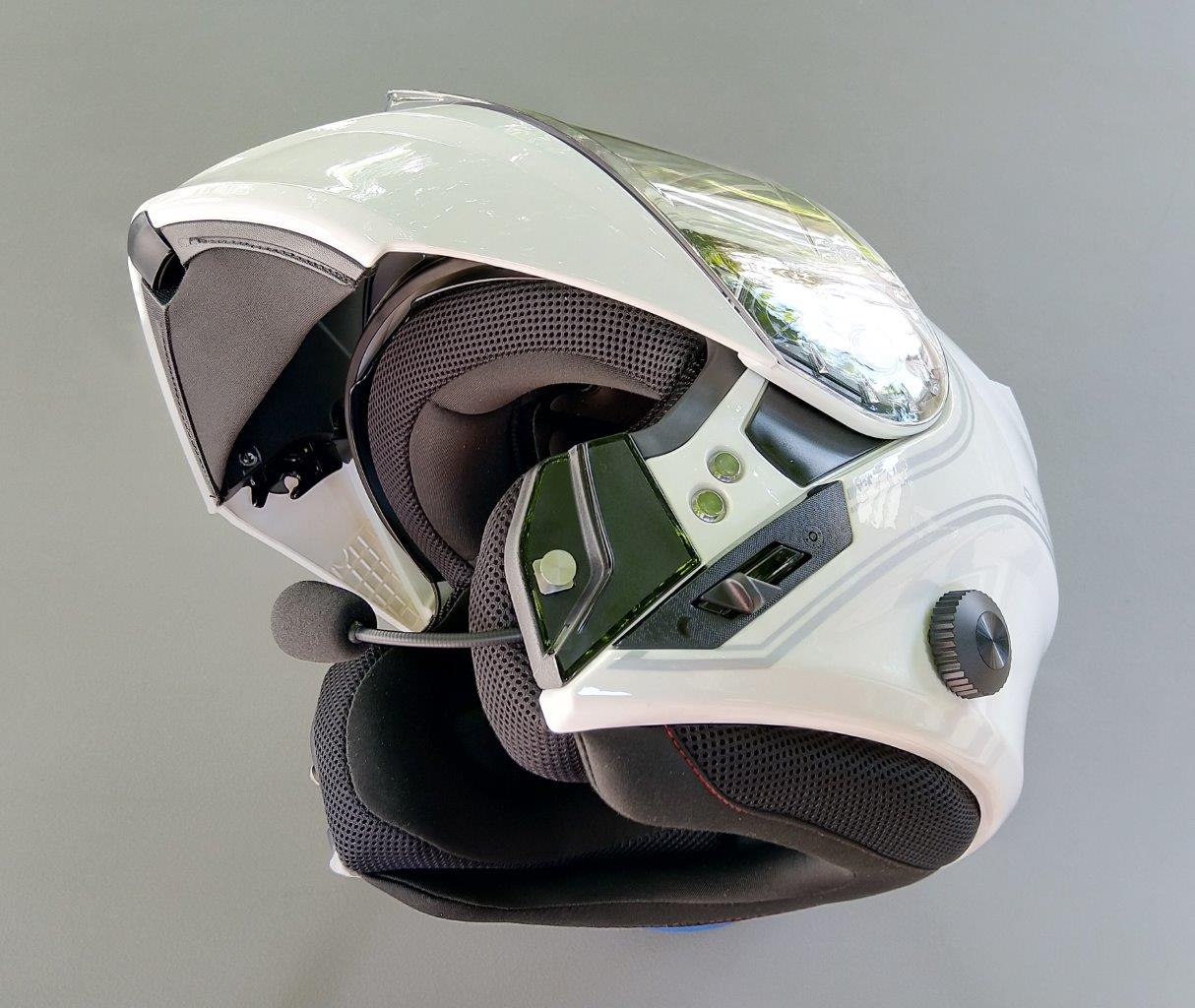

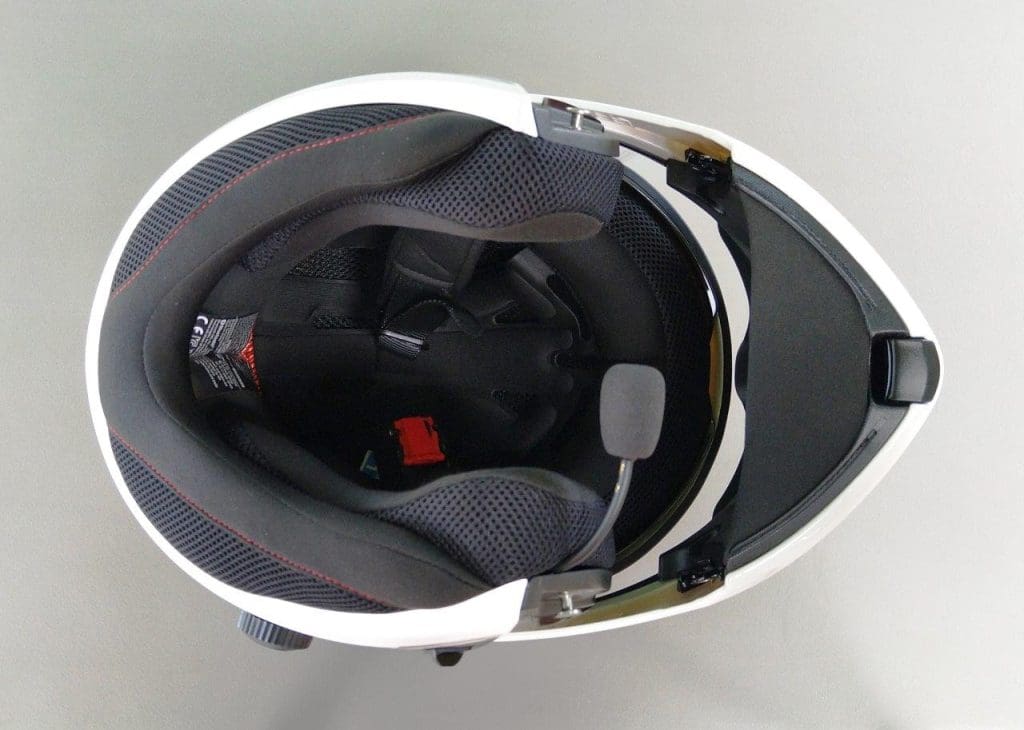
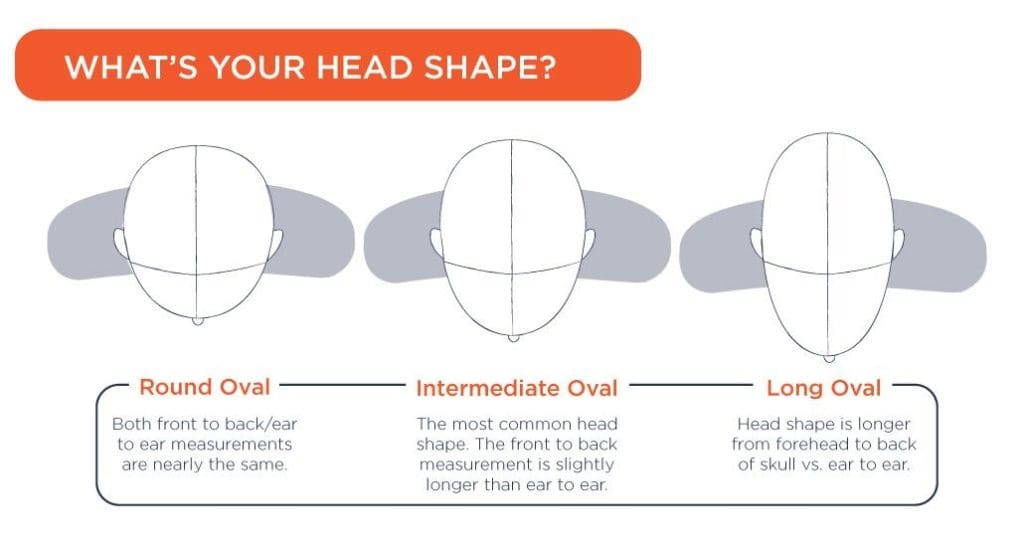
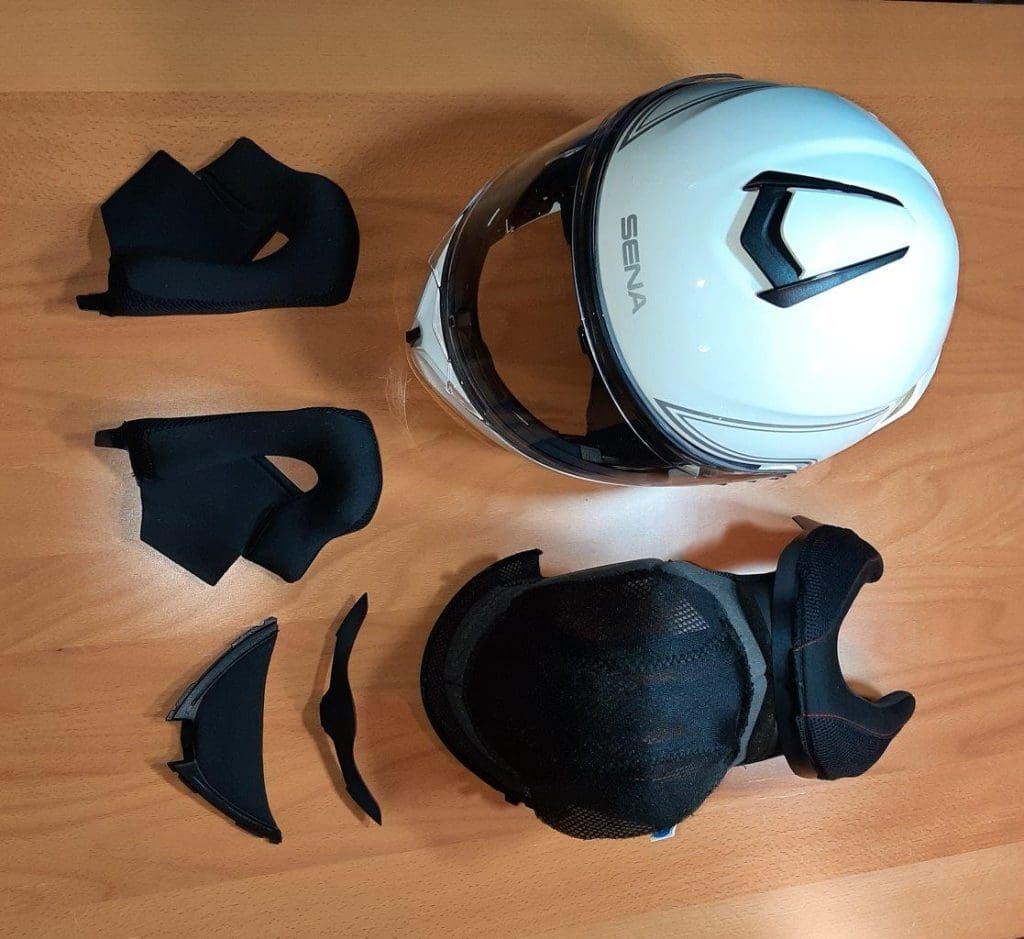
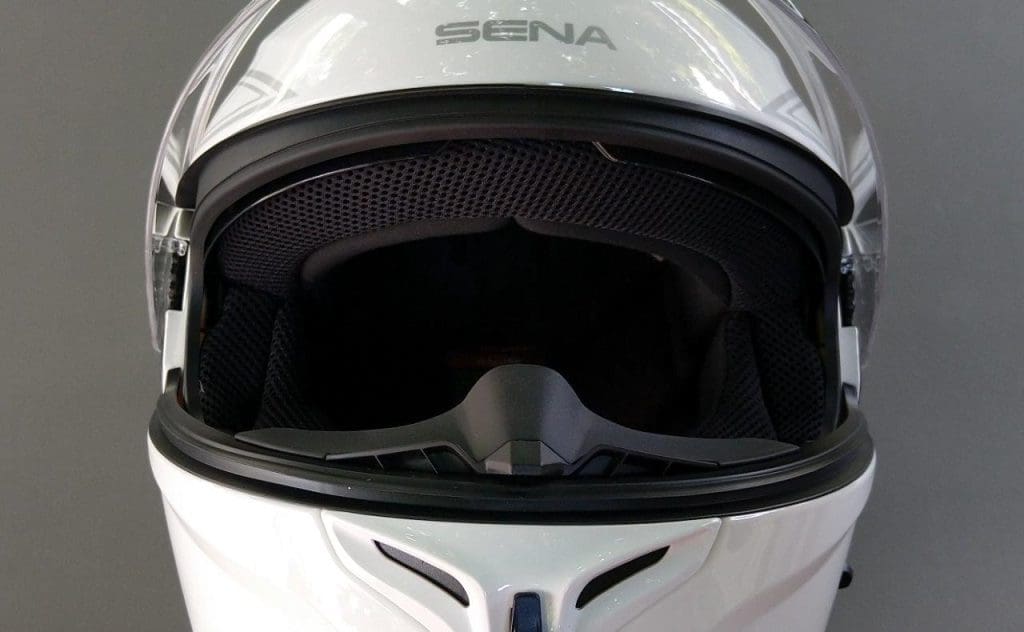
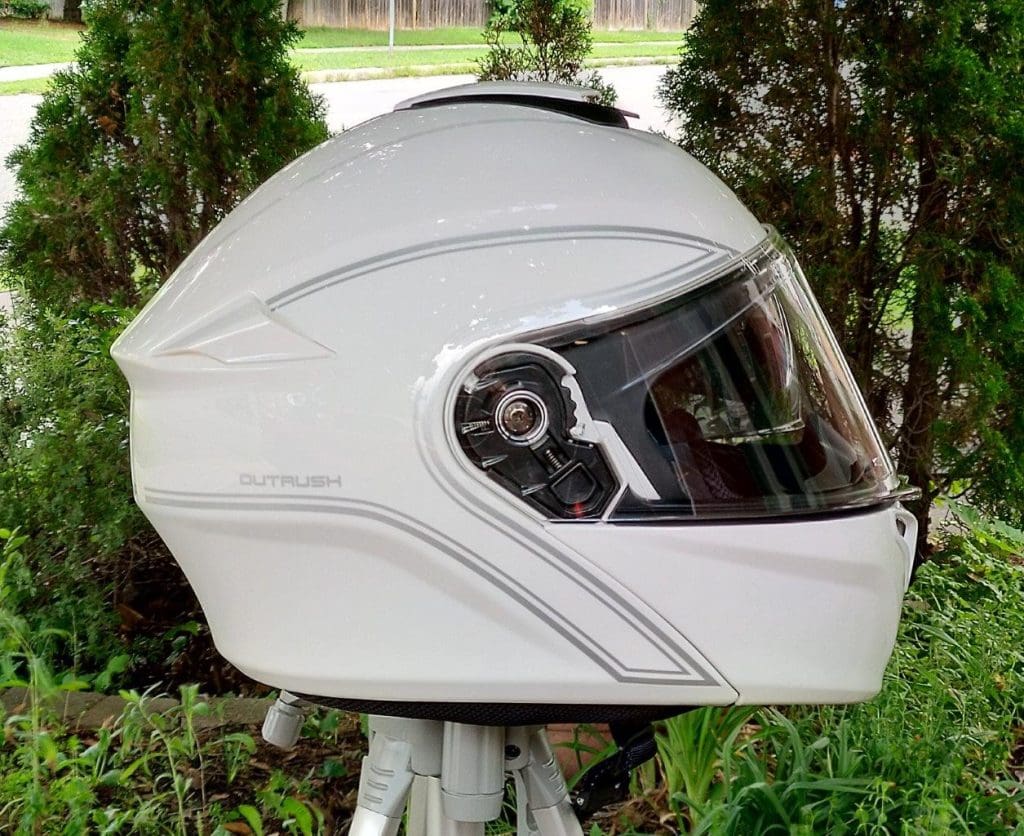

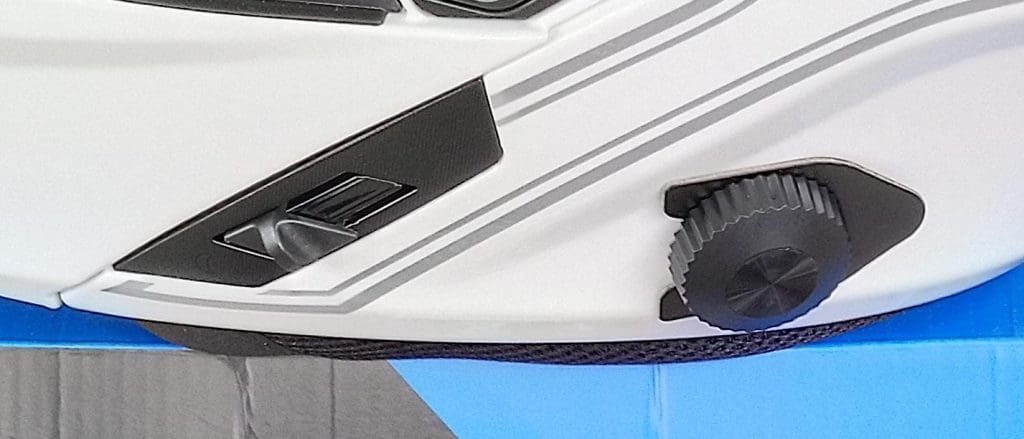
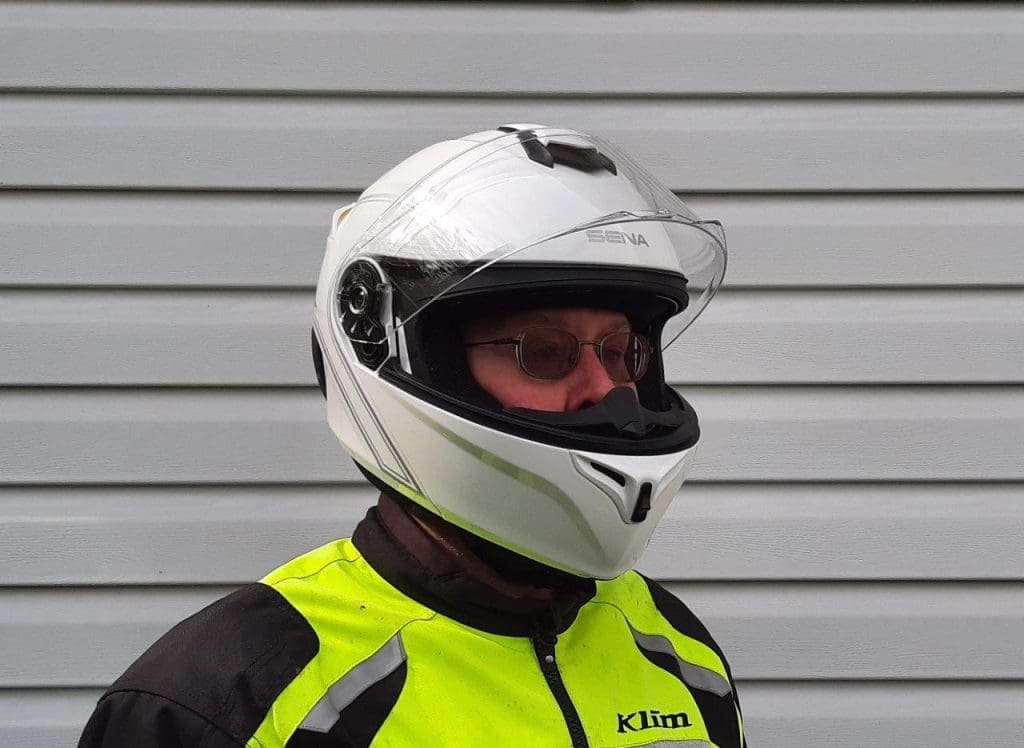

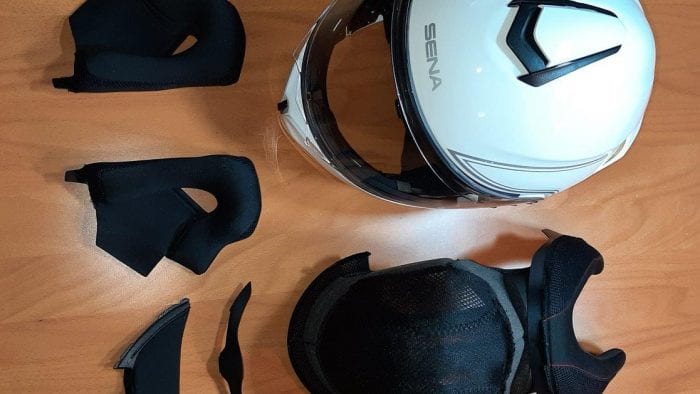
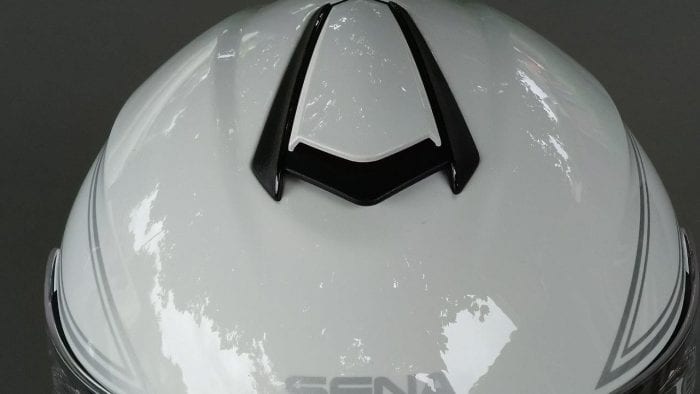

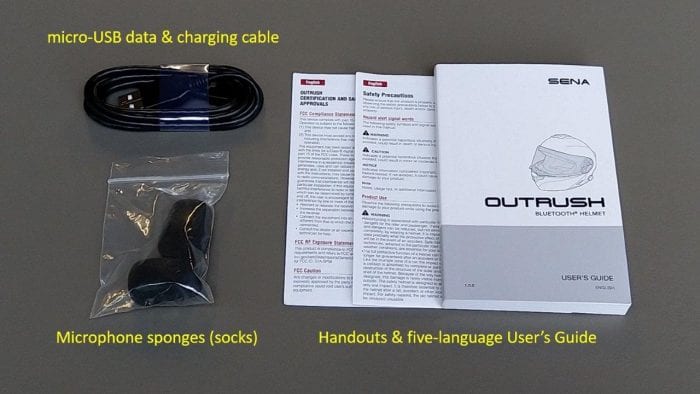
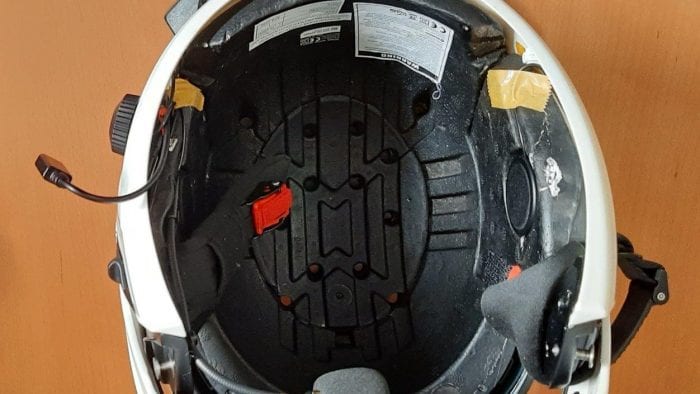

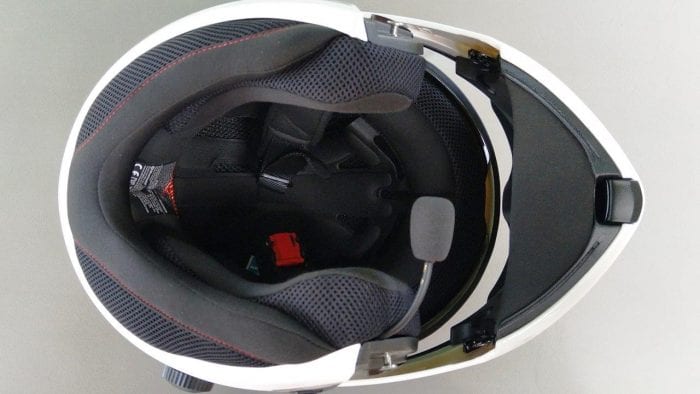

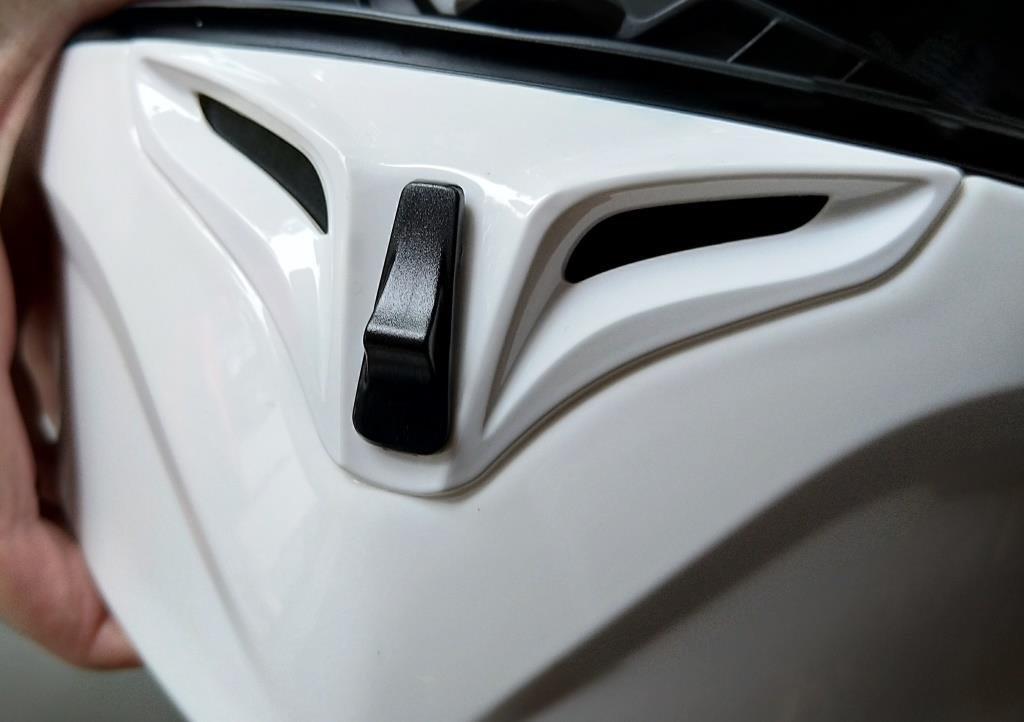
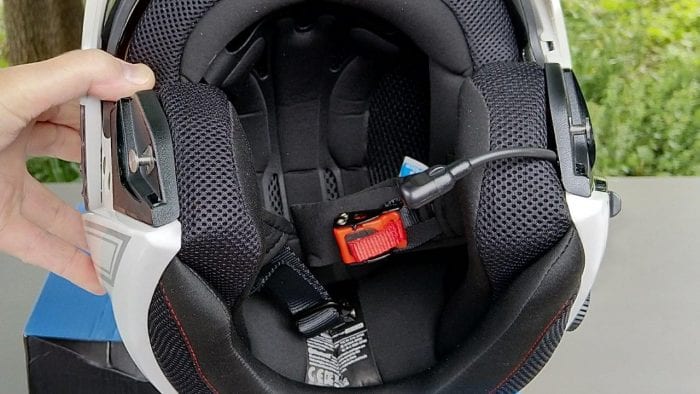
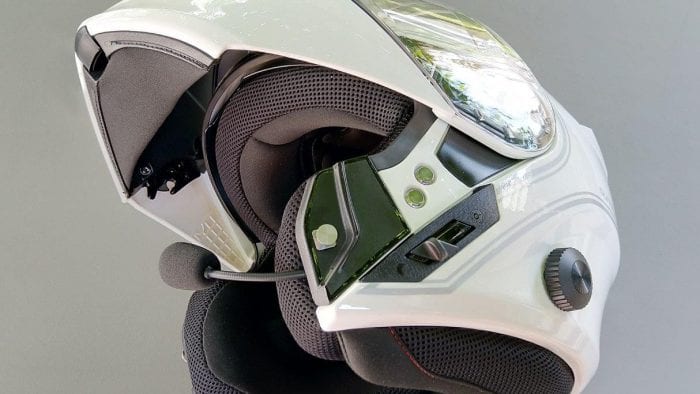

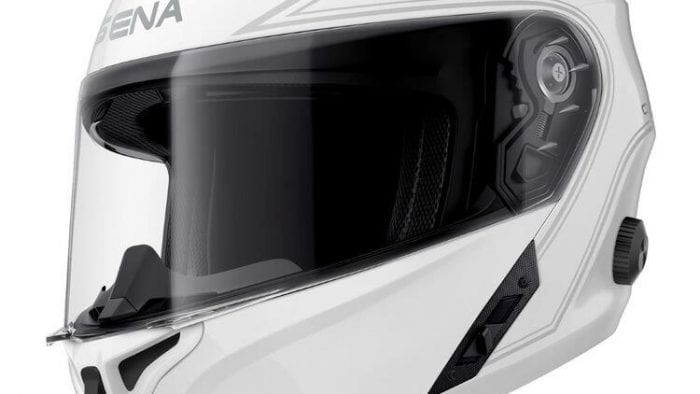
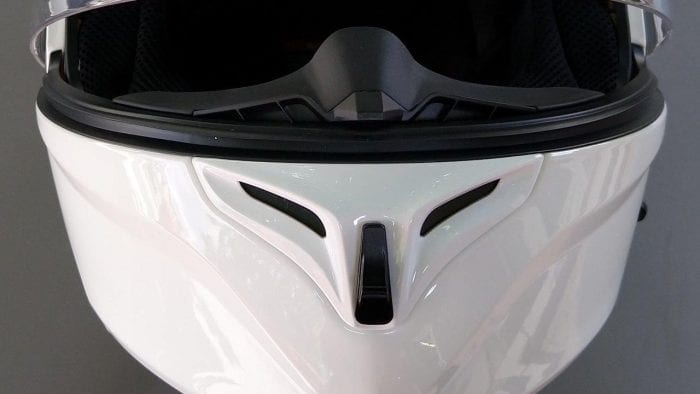

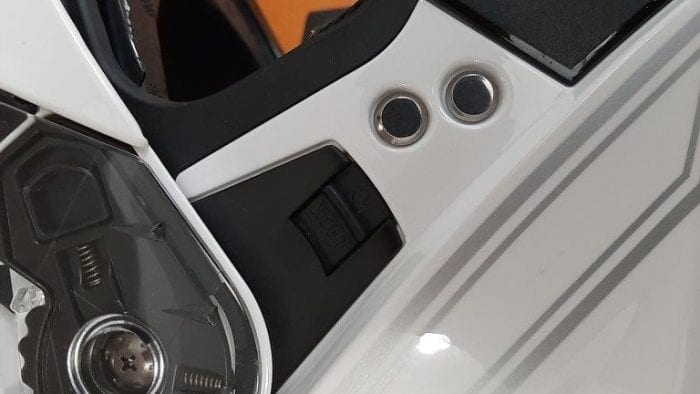
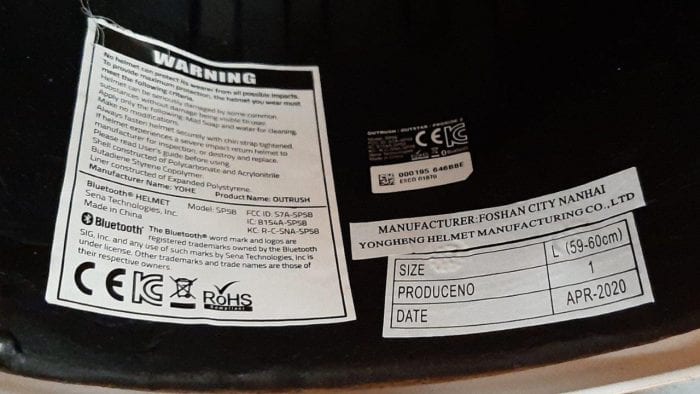

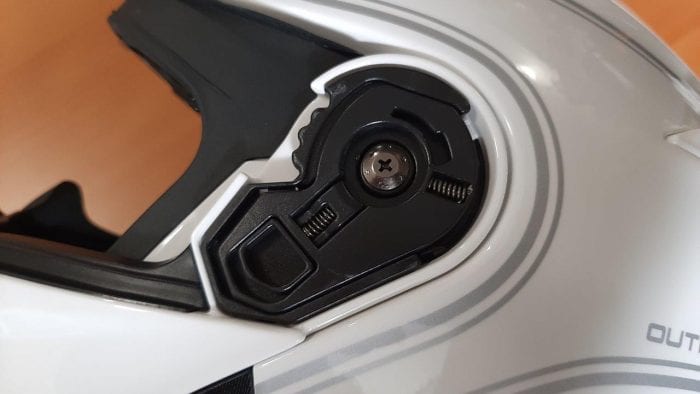
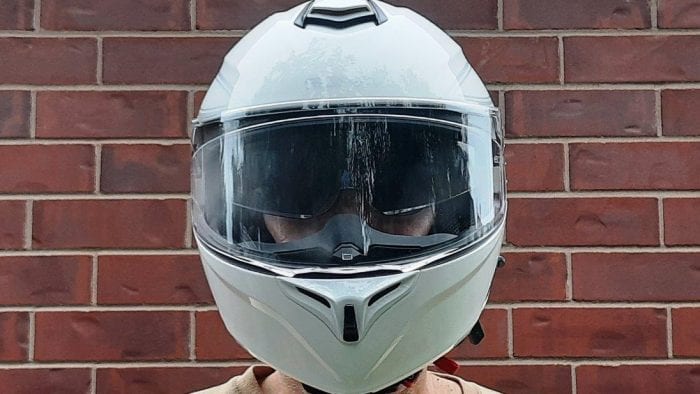
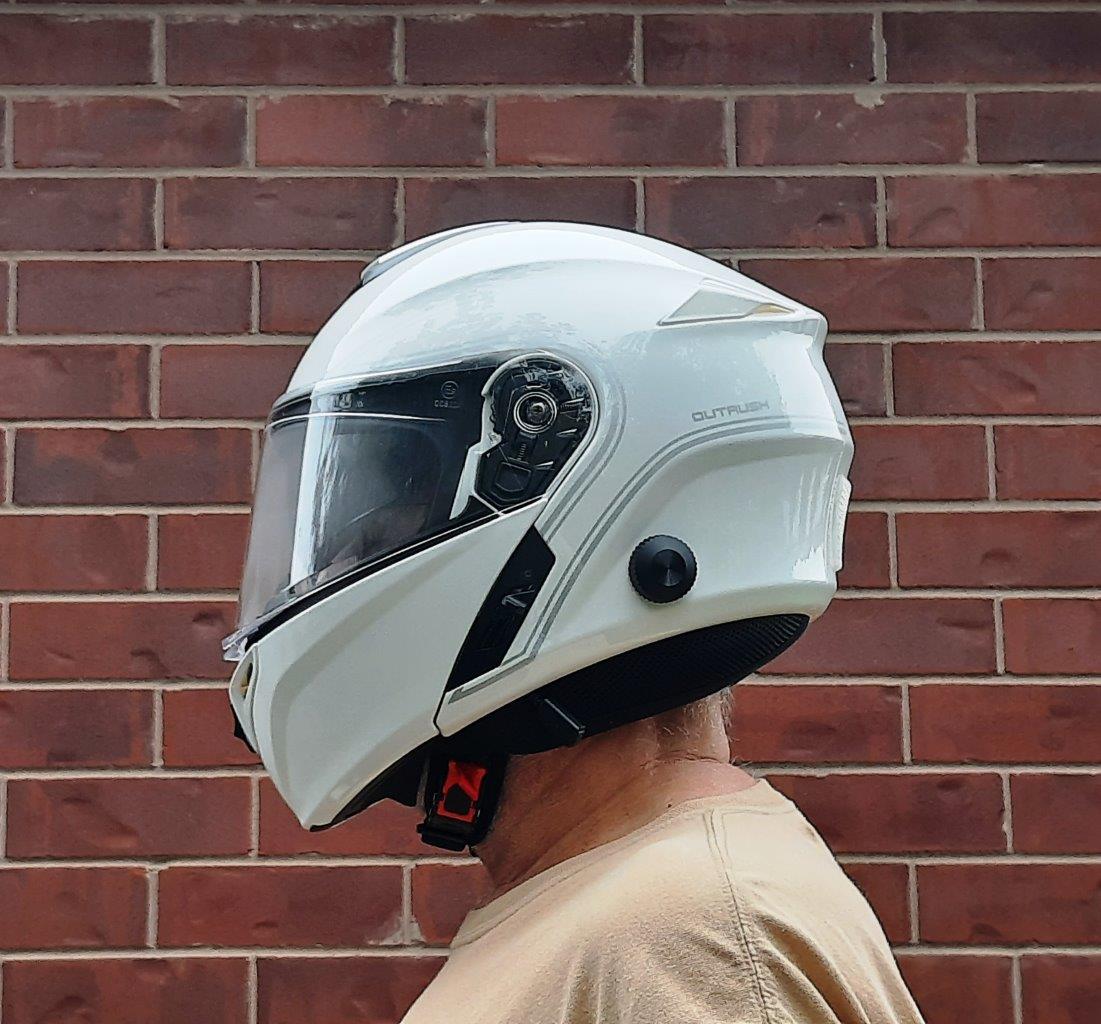


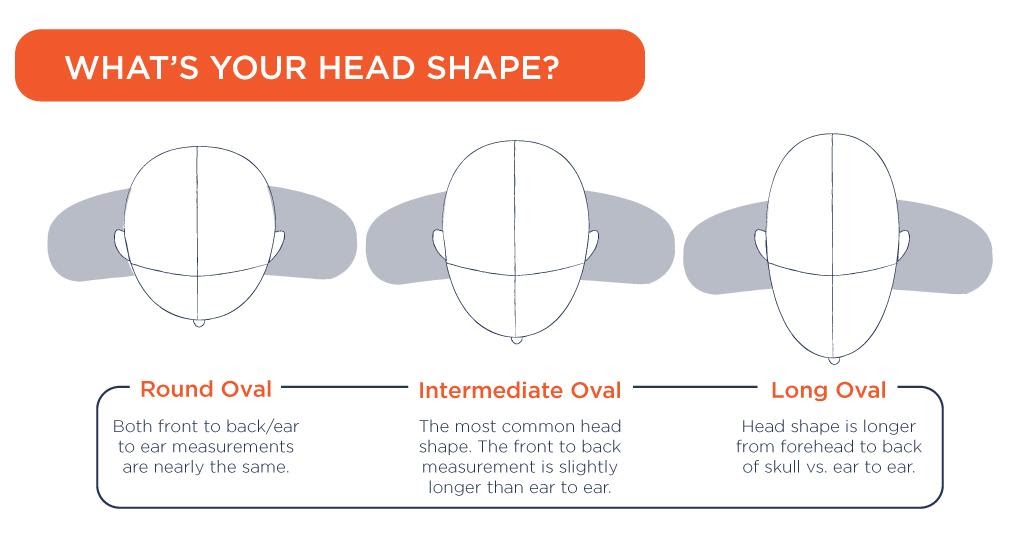
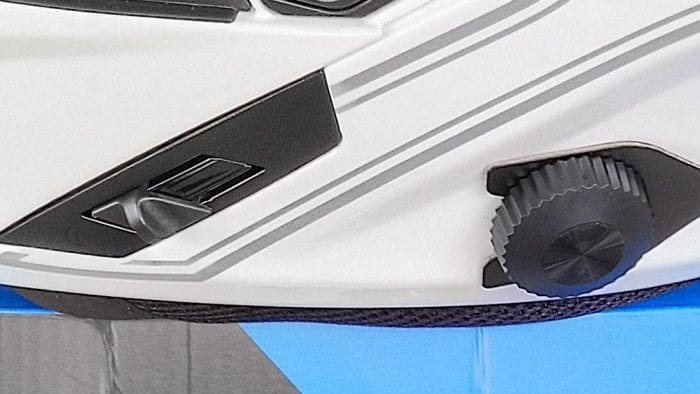
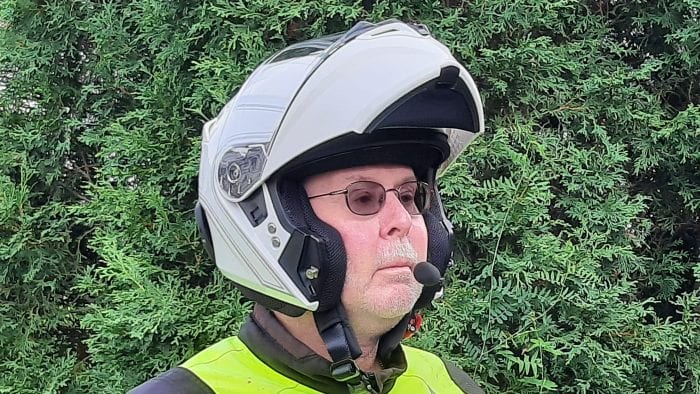
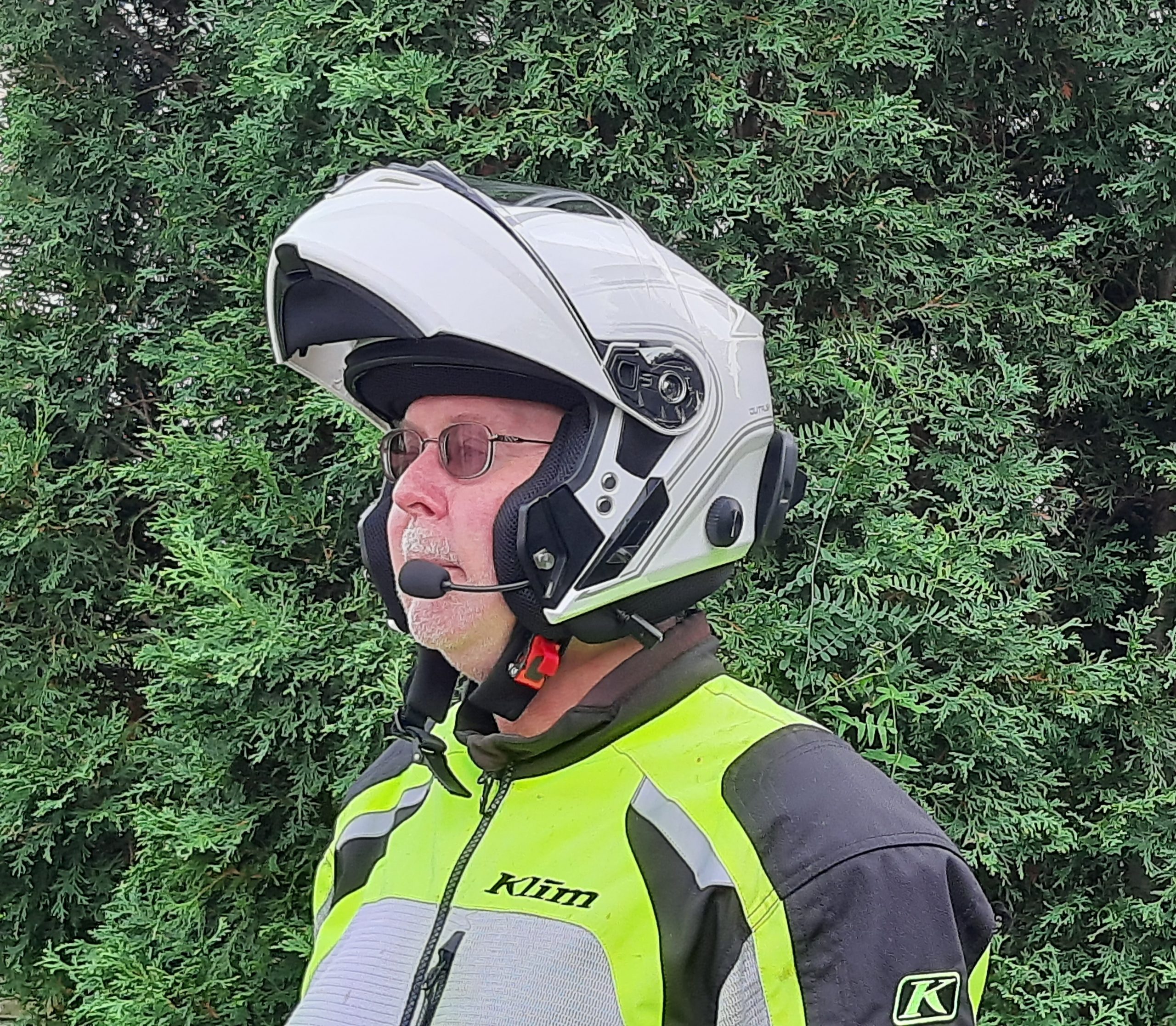
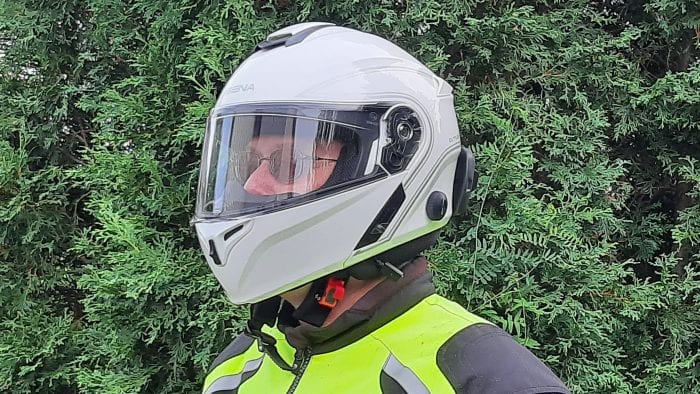

Next time you review a modular helmet please take a picture with the front piece raised while being worn.
Bill, we did, but they didn’t get submitted for the photo gallery (me bad); three photos now added to the gallery, just refresh the page if needed. Your comment was a timely and needed reminder… Cheers, Bruce
Shell sizes?
SP, now confirmed, one shell size is used for the Outrush…
Bruce
Thank you Bruce, much appreciated.